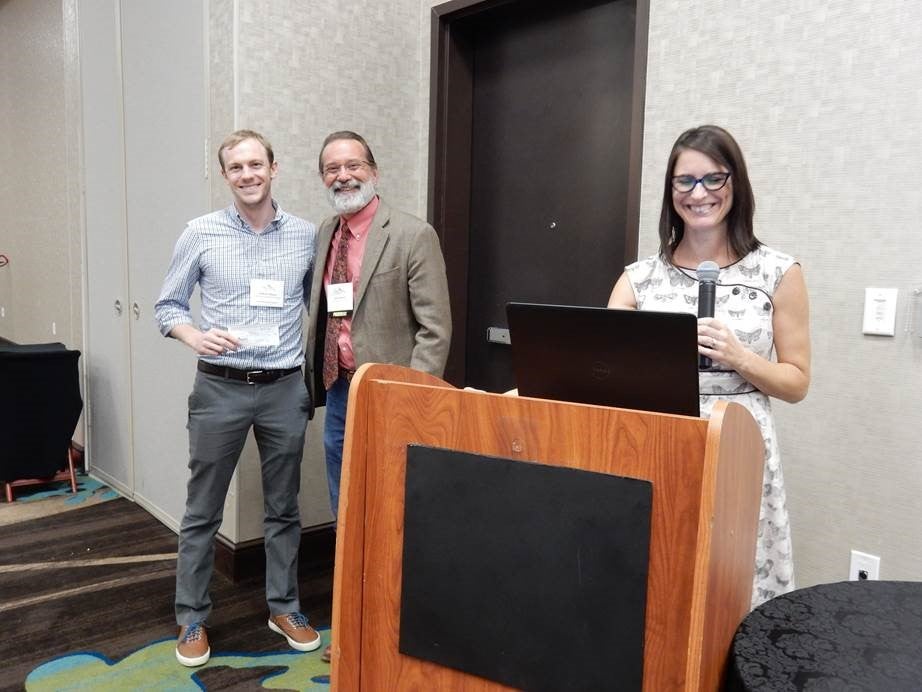Snake Venom Evolution

University of Central Florida biology doctoral student Andrew Mason won first place in the Clark Hobbs Poster Competition for his remarkable research on venomous snakes.
In April, Mason traveled to Cameron University in Lawton, Oklahoma where he attended the Southwestern Association of Naturalists Conference for the student only competition. He was accompanied by a fellow doctoral student Jason Strickland, who presented a talk on his dissertation research investigating venom Evolution in Mojave Rattlesnakes.
This year, 60 research projects were presented and only 13 were entered into the poster competition. Mason’s research project, Examining the Utility of Palm-Pitvipers as a Model Group for Studying Venom Evolution in Snakes, had been part of his dissertation research.
“The poster examines venom evolution among different species of snakes,” Mason said. “My research goals are to examine how these toxins are evolving and changing in relation to the evolution of the species and their environments.”
Mason is a student of the Parkinson Lab, which focuses its research on studying molecular evolution, conservation and molecular systematics among various other topics. His win marks the third year in a row the lab has taken home a first place award.
Mason gathered a majority of his research from Costa Rica last summer where he spent six weeks doing fieldwork. According to him, the research is important because vemons provide a model system for studying how adaptive traits evolve and change overtime.
“Venoms are a fascinating traits from an evolutionary perspective because of their extreme diversity and the unique benefits they convey to the species that have this trait,” he explained. “It is the interaction between adaptation, venom diversification, and speciation that I am interested in investigating through my dissertation research.”
Mason expects to graduate in December 2019 and wants to continue his research and use his talents to pursue a career as a research professor.
